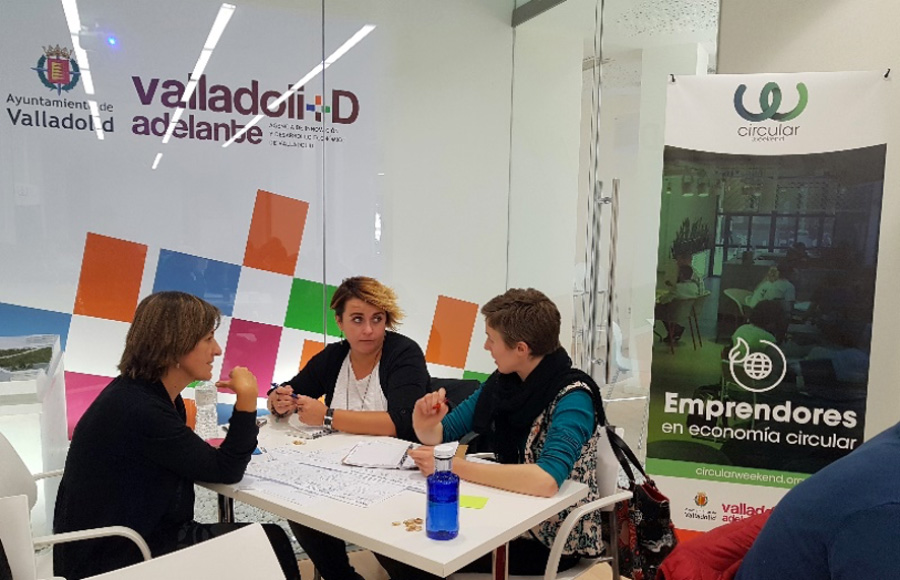Food and biomass
What are the benefits of a circular food sector?
The agrifood sector is responsible for almost one-fourth of greenhouse gas emissions globally.1 At the moment, we use food in a very linear way: we make it, we eat some of it, and we waste a lot of it (see also figure 1)2. In addition to greenhouse gas emission, this linear system has severe negative environmental consequences, like the extraction of finite resources, pollution of air and water, and the depletion of the soil. These negative impacts can be addressed by a more circular food system where we produce only the food that we need while ensuring that production processes enrich our environment (see figure 2)3. Such a transition would also have many environmental benefits such as reduced land use and water consumption, and reduced emissions of different kinds, not least CO2. This is especially relevant for cities since about 80% of all food will be consumed here by 2050.1

Figure 1. Sources of food waste. The numbers in the circles represent the percentage of total food production that is wasted by consumers (green numbers) and in either developing or developed countries (blue numbers).
(Ellen Macarthur Foundation, 2019)
How can a circular food system be realised?
According to the Ellen MacArthur Foundation, a circular food system requires the establishment of several criteria that:1
- waste and pollution are designed out
- products and materials are kept in use
- natural systems are regenerated
- food production improves the environment, instead of degrading it
- all people have access to healthy and nutritious food
How can circular economy strategies be applied to the food sector?
The creation of a circular food system requires a change in all stages of the food cycle: design, use, after-use, and support. Some examples are presented below.
- Circular design models: food production should be regenerative, e.g. through the recycling of agricultural and food waste as organic fertilizers that improve the health of the soils. Where possible, local production has priority in light of reduced transport and related impacts. Urban or peri-urban farming shortens the supply chain and can be used to complement current farmland food production. The city of Milano invests, for example, in the regeneration of the Porto di Mare area with the implementation of an Open Innovation Hub
 on Peri-Urban Agriculture. In addition, in the production phase, all by-products should be reused at their highest value, for example by transforming them into fertilizers.1
on Peri-Urban Agriculture. In addition, in the production phase, all by-products should be reused at their highest value, for example by transforming them into fertilizers.1 - Use and life extension models: changing the way food is used is important to move away from the linear model as described above. Subscribing to food as a service can prevent food waste, as the exact quantities of ingredients will be sent to your door.4 Altering our view on food is also necessary, for example by using ‘ugly’ fruits and overripe produce, and revisiting best-before date strategies. Consumers can also share left-over food online so that others can pick it up and thereby prevent food from being wasted.5 Supermarkets can contribute to the circular economy by discounting soon-to-expire products. Three inspiring initiatives in this circular category are:
- The Waste Factory
 : the Waste Factory saves surplus vegetables and makes fresh soups and sauces from it.
: the Waste Factory saves surplus vegetables and makes fresh soups and sauces from it. - Kromkommer
 : this Dutch initiative raises awareness about the unnecessary waste of vegetables that do not comply with our aesthetic standards for food.
: this Dutch initiative raises awareness about the unnecessary waste of vegetables that do not comply with our aesthetic standards for food. - Olio
 : a platform that can be used by local businesses and individuals to share left-overs.
: a platform that can be used by local businesses and individuals to share left-overs.
- The Waste Factory

Figure 2. An example of a circular food system.
(Ellen Macarthur Foundation, 2019)
- Value recovery models: after usage, efforts should be made to minimise waste, and any left-overs should be recovered. Bio-waste should be separately collected to prevent contamination. Reuse is possible through the redistribution of surplus food for human consumption or by feeding animals by-products of human food.1 If that is no longer possible, nutrients can be extracted from food waste to create animal feed, energy, and compost.6 A relevant example is ChainCraft
 , a Dutch company that extracts medium chain fatty acids from super market food waste.
, a Dutch company that extracts medium chain fatty acids from super market food waste. - Circular support models: through all phases of the food cycle, Information and Communication Technologies (ICT) can serve as support for higher levels of circularity. Artificial intelligence can be used by farmers to improve crop production.1 Supermarkets can use smart inventory management to better predict sales, e.g. by using weather forecasts and dynamic pricing.6 Restaurants can use technology that helps them reduce food waste, see e.g. the solutions developed by Winnow
 .
.

References
-
1. Ellen MacArthur Foundation. (2019). Cities and circular economy for food.
https://www.ellenmacarthurfoundation.org/assets/downloads/Cities-and-Circular-Economy-for-Food_280119.pdf -
2. Ellen MacArthur Foundation. (2013). Towards the circular economy – Opportunities for the consumer goods sector. Vol. 2.
https://www.ellenmacarthurfoundation.org/assets/downloads/publications/TCE_Report-2013.pdf
-
3. Ellen MacArthur Foundation. (n.d.). The future of cities.
https://www.ellenmacarthurfoundation.org/assets/downloads/future-of-cities.pdf -
4. Circle Economy. (2018). City-as-a-service – How circular service models will practically shape the city of the future.
https://assets.website-files.com/5d26d80e8836af2d12ed1269/5dea7d7562f8ac85742d5af9_City-as-a-Service-Circle-Economy-2018.pdf -
5. Circle Economy. (2019). Circular Prague.
https://www.circle-economy.com/insights/circular-prague -
6. Ellen MacArthur Foundation. (2015). Growth within: A circular economy vision for a competitive Europe.
https://www.ellenmacarthurfoundation.org/assets/downloads/publications/EllenMacArthurFoundation_Growth-Within_July15.pdf






